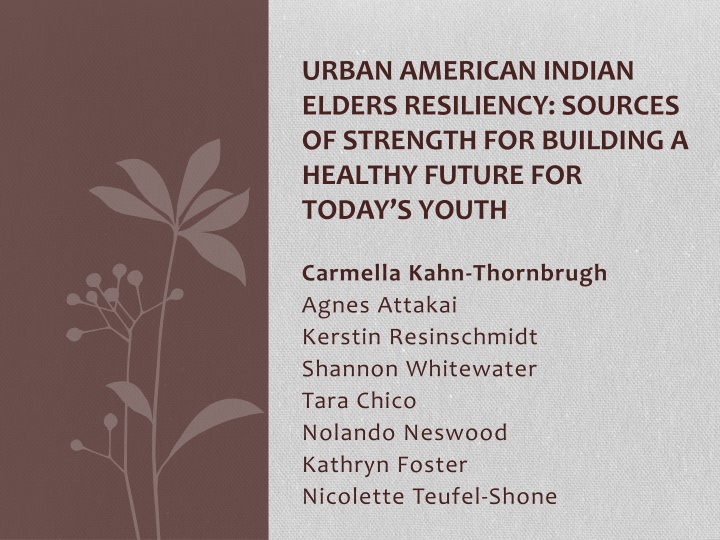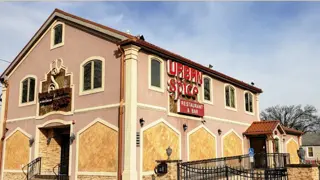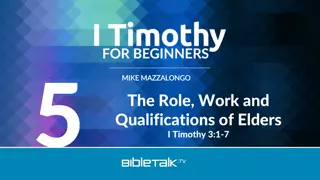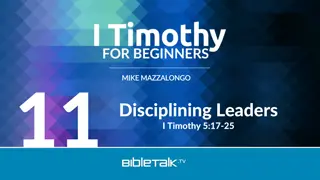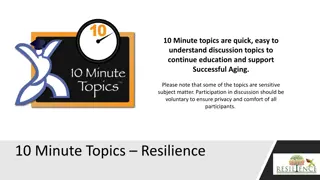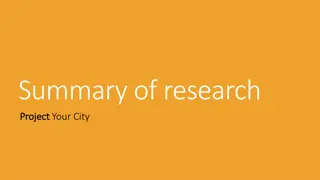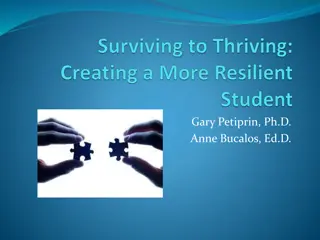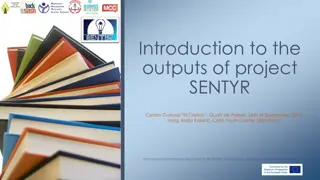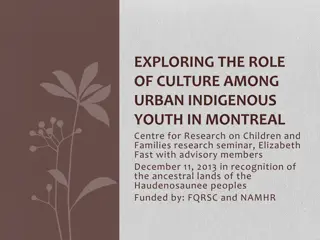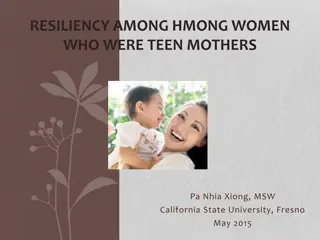Urban American Indian Elders' Resiliency: Building a Healthy Future for Youth
Explore the role of American Indian elders in fostering resilience among urban youth through intergenerational strategies like spirituality, tribal identity, ceremonies, and family support networks. A literature review highlights the significance of elders in imparting knowledge and cultural values to enhance the well-being of today's youth.
Download Presentation

Please find below an Image/Link to download the presentation.
The content on the website is provided AS IS for your information and personal use only. It may not be sold, licensed, or shared on other websites without obtaining consent from the author.If you encounter any issues during the download, it is possible that the publisher has removed the file from their server.
You are allowed to download the files provided on this website for personal or commercial use, subject to the condition that they are used lawfully. All files are the property of their respective owners.
The content on the website is provided AS IS for your information and personal use only. It may not be sold, licensed, or shared on other websites without obtaining consent from the author.
E N D
Presentation Transcript
URBAN AMERICAN INDIAN ELDERS RESILIENCY: SOURCES OF STRENGTH FOR BUILDING A HEALTHY FUTURE FOR TODAY S YOUTH Carmella Kahn-Thornbrugh Agnes Attakai Kerstin Resinschmidt Shannon Whitewater Tara Chico Nolando Neswood Kathryn Foster Nicolette Teufel-Shone
Background Role of American Indian (AI) elders Keepers and transmitters of knowledge (Wexler, 2011) Endured many adversities (Grandbois & Sanders, 2009) Life stories hold life lessons and foundational knowledge to better understand resilience Youth in today s society Disconnect between elders and youth (Wexler, 2011) Urban AI youth face greater challenges connecting with elders (Stumblingbear-Riddle, 2012) Previous research acknowledges that ties to culture and other variables (i.e. social support) may be protective and lead to resilient outcomes for positive youth development (LaFromboise et al., 2006; Wexler, 2011)
Protective intergenerational strategies Spirituality Tribal identity Elders Ceremonies and rituals Humor Oral tradition Family Support networks (HeavyRunner and Morris, 1997) What protective strategies can elders offer to enhance resiliency among urban American Indian youth?
Methods: Literature review 1. Medical and Social science databases were surveyed (1) Peer-reviewed English based articles (2) Published from January 1, 1980 to December 31, 2013 (3) AIAN and Hawaiian elders as the target population (4) Non-clinical based (5) Key words and terms for American Indian/Alaska Native/Native Hawaiian Resilience
Methods: Diagram? of? Literature? Review:? ? American? Indian,? Alaska? Na ve,? Na ve? Hawaiian? Elder? Resilience? Number? of? journal? ar cles? iden fied? ? in? database? search? ? (n=138)? Titles? and? abstracts? excluded,? focus? not? culture? ? (n=46)? ? Number? of? ar cles? reviewed? ? by? primary? categories? (n=92)? Ar cles? excluded? as? Other? ? ? ? ? ? ? (? n=? 27)? ? ? Ar cles? excluded,? elder? resilience? not? included? ? (? n=? 57)? ? Number? of? ar cles? included? (n=8),? all? address? family? dynamics? and? influence?
Methods: Pilot research project 2. Documenting and Promoting Resilience in Urban American Indians (Co-PIs: Agnes Attakai, Kerstin Reinschmidt) CBPR approach; partnership with Tucson Indian Center Defining resilience from the perspective of urban American Indian elders. Qualitative methods: focus groups and individual interviews with 13 urban American Indian elders Utilized thematic analysis Digital stories and a curriculum for a youth program
Results: Literature review Protective factors Resilience Understanding elders resilience Intergenerational relationships Family/community/collective connectedness Culture Storytelling, activities, sense of belonging, sense-making Spirituality Higher power, God
Results: Pilot Research Project Revealed protective factors for youth related to culture, youth activities, education, spirituality, connecting elders with youth
Resilience factors: Culture Factor Concept Culture Teachings, values Farming with grandparents knowing traditional role Know history, historical trauma learning language/words learn stories Meet and remember relatives and family kinship Enjoy life even without having money; Teach children about historical trauma Teach children they have strength to get through challenges (use prayer), that there s something great at the end Exercise and respect our bodies Teach children to stand up for selves Have a voice Share Be responsible Have good work ethics
Resilience factors: Activities Factor Concept Activities Traditional Bridging the gap, classes with elders Drum circles, dancing, powwows Indian clubs Collect saguaro fruit, grow fruit and vegetables Raise and butcher cows Contemporary Summer jobs, summer camp, reading/writing program Youth programs, youth coalition, prevention programs Physical activity (e.g. volleyball, basketball, softball, racquetball, soccer, wrestling, kickball, football, riding bikes, walking, Frisbee, hacky sac, swim nights, dancing) Service/volunteer work, pick up trash Mental health programs YMCA, boys/girls club for Natives Yard work Manage money, gun safety Camping, hiking, Traveling Arts and crafts
Resilience factors: Education Factor Concept Education Support for education Encourage higher education Educational opportunities Tutoring programs at Tucson Indian Center TIC can help new students fit in and feel comfortable Teaching youth they will leave for their education and return home Taking responsibility for own education Growing up in hard conditions (i.e. poverty) taught values of working hard, staying in school, furthering education, and getting a job The student has to take the steps to get educated or do vocational training Teach children to go on with lives and school Parental involvement Money responsibility Student choice to attend boarding school Parents need to offer support to make a difference Parents visit school and talk to teachers Parents enroll child in YMCA afterschool programs Parents and grandparents set high expectations Working with and helping Native Americans Know your upbringing so you know why you exist Don t take things for granted Grandparent tells youth to stay in school, do what is right, use education as part of living Motivation
Discussion Literature search and qualitative data from elder s narratives helped identify key resiliency factors uniquely specific for urban AI youth Strengths in knowing history and roots Adults and elders views on culture were different from youth Adults & elders: Culture is a collective experience; draw from intergenerational strengths/ practice; get strength from those who came before; feeling grounded Youth: Culture was related to specific activities/skills; culture is slipping away; had cultural strengths but didn t know it Oppressive policies have disrupted the relationship between youth and their Elders
Recommendations Strategies for enhancing resilience among youth intergenerational communication (stories about historical trauma and elder resilience) Teach youth how culture can be a sustaining force and how it is linked to strengths (personal to collective) to overcome challenges Appropriate methods: Storytelling and narratives are culturally relevant methods that can be combined in CBPR approaches Future research: Increase funding and opportunities for public health research to explore how culture fosters resilience among urban American Indians Tribal opportunities self-determination policies (include elders in schools)
Thank you Carmella Kahn-Thornbrugh ckahn@email.arizona.edu This work was supported by the Center for American Indian Resilience (CAIR) a NIH-NIMHD P20 Exploratory Center of Excellence (1P20MD006872) awarded to Northern Arizona University with subcontracts to University of Arizona and Dine College
References Gandbois, D. M., & Sanders, G. F. (2009). The resilience of Native American elders. Issues in Mental Health Nursing, 30, 569-580. HeavyRunner, I., & Morris, J. S. (1997). Traditional Native culture and resilience. CAREI Research/Practice Newsletter, 5(1). LaFromboise, T. D., Hoyt, D. R., Oliver, L., & Whitbeck, L. B. (2006). Family, community, and school influences on resilience among American Indian adolescents in the upper midwest. Journal of Community Psychology, 34(2), 193- 209. Stumblingbear-Riddle, G., & Romans, J. S. C. (2012). Resilience among urban American Indian adolescents: Exploration into the role of culture, self-esteem, subjective well-being, and social support. American Indian and Alaska Mental Health Research, 19(2), 1-19. Wexler, L. (2011). Intergenerational dialogue exchange and action: Introducing a community-based participatory approach to connect youth, adults and elders in an Alaskan Native community. International Journal of Qualitative Methods, 10(3), 248-264.
